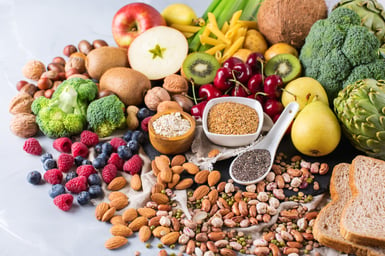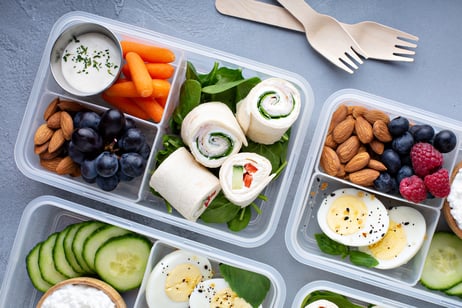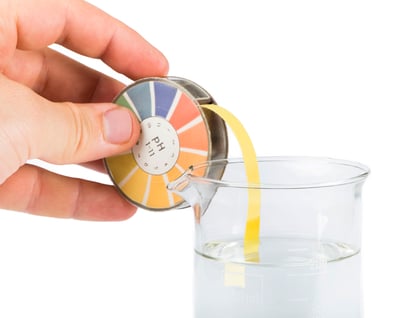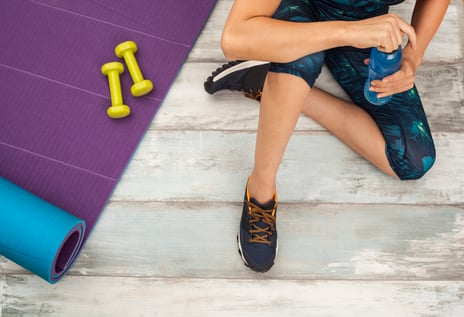
Ok, let’s be real. When temperatures drop, the last thing we want to do is chug water and electrolytes. I, too, would rather snuggle under a blanket, sipping hot cocoa. BUT staying hydrated in the winter is just as important as it is in the summer. You might not be sweating nearly as much, but moisture continues to evaporate from your skin whether you feel it or not. Winter hydration is a key factor in helping your body perform and recover during these cold months.
Easy Ways to Stay Hydrated During the Colder Months
Hydration doesn’t have to be cold. There are plenty of warm hydration beverages to try. Instead of reaching for an ice-cold glass of water, warm it up and add lemon and salt. Many types of tea contain minerals that aid in hydration.
Eat your hydration. Food is hydration in disguise. Many fruits, such as oranges, lemons, kiwi, and pomegranates, contain water and are packed with vitamins. Pickles and other salty snacks can also provide the sodium needed to replenish what was lost in perspiration.
Keep your water bottle close. Make your water bottle your best friend this winter. Bring it with you everywhere you go. Seeing it throughout the day is a great reminder to keep sipping.
Don’t overlook electrolytes. If you plan to participate in winter activities like sledding, skiing, or even hitting the gym, you’ll lose electrolytes. Replenish them with an electrolyte drink.
Winter Signs of Dehydration
Signs of dehydration are less obvious in the winter, but here’s what to watch for:
Dry lips. If you’re constantly licking your lips or reapplying lip balm, you may be dehydrated.
Fatigue and tiredness. If you feel tired, foggy, or overly fatigued for no reason, hydration could be the issue.
Urine color check. This might be too much information, but urine is a clear indicator of hydration. Dark yellow urine is a sign that you need to drink more water.
Flaky skin. If your skin is cracking or peeling for no apparent reason, evaluate your hydration levels.
Stay Hydrated and Stay Strong
Optimize your performance and recovery this winter by staying hydrated. Drinking enough water and electrolytes keeps your body energized, optimized, and ready for your workouts.




 What you eat before hitting the gym can significantly impact your performance and recovery. The right pre-workout nutrition can help fuel your workout, prevent fatigue, and optimize results. Here’s a guide on what gym-goers should consider eating before a workout.
What you eat before hitting the gym can significantly impact your performance and recovery. The right pre-workout nutrition can help fuel your workout, prevent fatigue, and optimize results. Here’s a guide on what gym-goers should consider eating before a workout.


 Summer brings longer days and plenty of sunshine, perfect for outdoor activities and adventures. However, the heat can also lead to dehydration. Here are some essential hydration tips to keep you cool and refreshed all summer long:
Summer brings longer days and plenty of sunshine, perfect for outdoor activities and adventures. However, the heat can also lead to dehydration. Here are some essential hydration tips to keep you cool and refreshed all summer long:.jpg?width=493&height=288&name=GettyImages-1158207879(1).jpg) Fitness center amenities, such as a Sauna or Steam room are amongst the most popular for members of all ages. Members seek these amenities for potential benefits for physical and mental well-being. In this blog, you will learn some potential benefits of using these amenities.
Fitness center amenities, such as a Sauna or Steam room are amongst the most popular for members of all ages. Members seek these amenities for potential benefits for physical and mental well-being. In this blog, you will learn some potential benefits of using these amenities..jpg?width=480&height=309&name=GettyImages-1448979924(2).jpg) In today's fast-paced world, where new diet trends and health fads emerge almost daily, it can be challenging to discern what truly benefits our bodies. Amid this whirlwind of ever-changing advice, the key to a healthier life may not lie in exotic superfoods or rigorous diet regimens, but in the consistent practice of nutritional basics.
In today's fast-paced world, where new diet trends and health fads emerge almost daily, it can be challenging to discern what truly benefits our bodies. Amid this whirlwind of ever-changing advice, the key to a healthier life may not lie in exotic superfoods or rigorous diet regimens, but in the consistent practice of nutritional basics.
 Vacation is supposed to be fun, enjoyable, and relaxing. When it comes to weight loss attempts or making healthy choices in general, however, traveling can be a challenge. Here are some of our RD’s best tips for healthy eating when traveling or on vacation.
Vacation is supposed to be fun, enjoyable, and relaxing. When it comes to weight loss attempts or making healthy choices in general, however, traveling can be a challenge. Here are some of our RD’s best tips for healthy eating when traveling or on vacation.
 Alkaline vs. Acid
Alkaline vs. Acid Sodium, potassium, magnesium, calcium, phosphate, and chloride are all electrolytes, or minerals that fulfill essential roles within the body. More specifically, sodium, chloride, and potassium work together to maintain fluid balance within the body, while magnesium and calcium promote optimal muscle function and aid in energy metabolism.
Sodium, potassium, magnesium, calcium, phosphate, and chloride are all electrolytes, or minerals that fulfill essential roles within the body. More specifically, sodium, chloride, and potassium work together to maintain fluid balance within the body, while magnesium and calcium promote optimal muscle function and aid in energy metabolism.